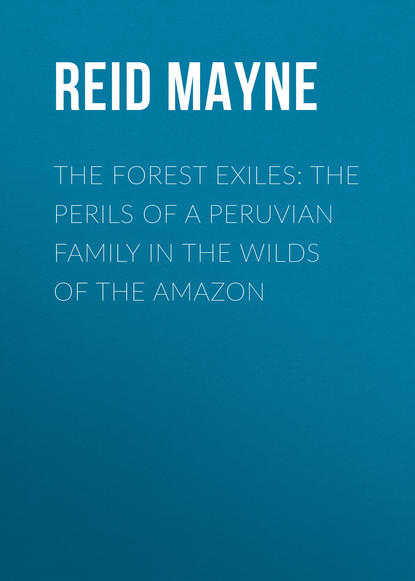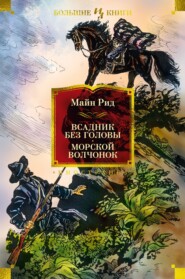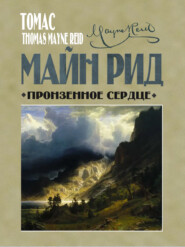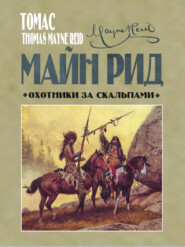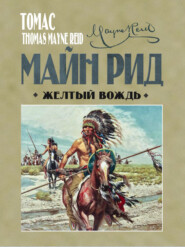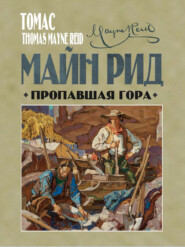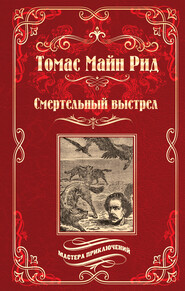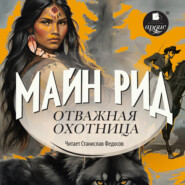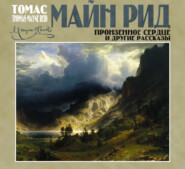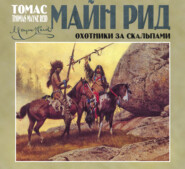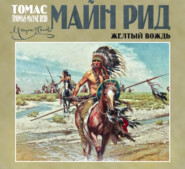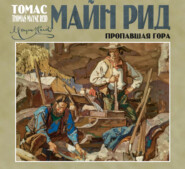По всем вопросам обращайтесь на: info@litportal.ru
(©) 2003-2024.
✖
The Forest Exiles: The Perils of a Peruvian Family in the Wilds of the Amazon
Настройки чтения
Размер шрифта
Высота строк
Поля
Chapter Sixteen.
The Palm-Woods
It happened, that upon the opposite side of the stream there was a broad track covered with palm-trees, while not one was to be seen on that side where they intended building their house. As these are the most convenient trees for constructing a house to suit the hot climate of the Montaña, it appeared necessary that they should use them. But how were they to get at them? The stream flowed between them and the camp; and although not a large river, yet at that place it was very wide and deep, for in the flat table valley it expanded to the dimensions of a little lake. Below, where it issued out of the valley, it ran for some distance in a deep cleft between rocky banks almost or quite perpendicular, and above the valley it came dashing through an impassable ravine. If they could only get over to cut the palms, they knew they could roll them to the bank, and float them across the stretch of still water. But how to get over required some consideration. Guapo could swim like a water-dog, but Don Pablo could not; and Leon, having been brought up as a town boy, had had but little practice, and consequently was but a poor swimmer. What, then, was to be done, as Guapo could not well manage the palms without help?
After examining the stream, both above and below, no crossing place could be found, but just at the point where it ran out of the valley, the space between the high banks was very narrow. A good long plank would have reached across it – had they only had one – but that they had not. Now, upon the opposite bank there grew a tall tree. It was one of the beautiful silk-cotton trees already mentioned. It stood upon the very edge of the chasm. Both Don Pablo and Guapo saw at a glance that this tree could be felled, and made to fall across the stream, so as to form the very bridge they wanted.
Not much time was lost about it. Guapo, tying his axe upon his shoulders, ran up the near side, until he was opposite the still running water; and then plunging in, swam across in a few seconds. He soon after appeared on the opposite bank, at the root of the bombax, which he attacked in such a manner that one who did not know what he was about might have fancied he was angry at it. In a few minutes a great notch appeared in the side of the tree, and Guapo continuing his sturdy blows, made the yellow chips fly out in showers. Of course the notch was cut on the side next the stream, so that the tree would fall in that direction. The beaver understands that much, and Guapo had considerably more intelligence than any beaver.
In about half-an-hour the bombax began to creak and lean a little. Then Don Pablo threw over a lasso, which had been brought along. Guapo noosed one end over a high limb, and tying a stone to the other, pitched it back to Don Pablo, who hauled it taut. Then a few cuts of the axe broke the skin of the tree on the other side, Don Pablo pulled by the rope, and with a loud tear and a crash, and a vast deal of crackling among the branches, the great bombax settled into a horizontal position across the chasm. The bridge was built.
After all, it was no slight adventure to cross it. The rounded trunk was anything but sure footing, and even had it been a flat plank, the depth of the chasm – nearly an hundred feet clear – and the white roaring torrent below, were enough to shake the stoutest nerves. All, however, got over in safety, and proceeded up to the palm-woods. I say all – but I mean only the male population of the new settlement. Doña Isidora and the little Leona remained by the camp, both of them busy scraping yucca roots, to be manufactured into cassava, and then into bread.
On arriving among the palm-trees, Don Pablo was struck with a singular fact. He observed (indeed, he had already noticed as much from the opposite side of the river) that instead of one species of palm, there were not less than a dozen kinds growing in this wood. This was a very unusual circumstance, as although two or three species are often found together, such a varied collection as were there could only have been made by human hands. Here, again, was recognised the work of the missionary monk, who had no doubt planted most of the species, having received them very likely from many distant stations of his fellow-labourers in other parts of the Amazon valley.
Whether Franciscan, Jesuit, or Dominican (for all three have had their missions in this part of the world), the holy father who resided here, thought Don Pablo, must have been an ardent horticulturist. Whether or not he converted many Indians to his faith, he seemed to have exerted himself to provide for their temporal necessities, for there was hardly a useful plant or tree suitable to the climate that was not to be found growing near the spot. Such were the reflections of Don Pablo.
“What a variety of beautiful palms!” said he, looking around upon these by far the fairest forms of the vegetable creation.
Now, my boy reader, I have not the slightest doubt but that you, too, think the palms the fairest forms of the vegetable creation. I have not the shadow of a doubt that your heart beats joyfully at the very word “palm;” that you love to gaze at one of these stately trees, and that you would give all your pocket-money for an afternoon’s ramble through a real palm-wood. Would you not? Yes. I am sure of it. Now I could tell you a great deal about palms if I would; and I would, too, if my space and time allowed me, but neither will, alas! Why, if I were only to give you even the shortest and dryest botanic description of all the different palms that are known to us, that mere dry catalogue would fill a book as big as this one!
How many species do you think there are? Up to this time you have thought, perhaps, there was only one, and that was the palm-tree itself. Maybe you had heard of more, such as the sago-palm, the cocoa-nut palm, the date-palm, or the cabbage-palm; and you fancied there might be others – perhaps as many as a dozen! Now you will hardly credit me when I tell you that we know of no less than six hundred species of palms, all differing from each other! I may add, further, that it is my belief that there exist on the earth as many more – that is, the enormous number of twelve hundred. The reason why I entertain this belief is, that in all cases where similar guesses have been hazarded – whether with regard to plants, or birds, or mammalia– they have eventually proved far below the mark; and as the palm countries are the very regions of the earth least known and least explored by botanists, it is but reasonable to conclude that great numbers of species have never yet been described, nor even seen. Another fact which strengthens this probability is, that peculiar species of palms are sometimes found only in a limited district, and nowhere else in the same country. A small river even sometimes forms the boundary-line of a species; and although whole groves may be seen on the one side, not a tree of the same sort grows on the other. Some botanists even prognosticate that more than two thousand species of palms will yet become known. Of the six hundred species known, about half belong to the Old World, and half to America. In America they are chiefly found growing on the Continent – although several species are natives of the West India Islands – while on the Eastern hemisphere the greatest number of species belong to the islands.
I might tell you a great deal of the importance of these noble trees to the human race, for they are as useful as they are beautiful. Almost every sort has its particular use in the economy of human life. Not only do they serve certain purposes in Africa, Asia, America, and Oceanica, but in all these divisions of the earth there are whole nations who live almost exclusively upon one or another species of palm.
A discovery has lately been made in regard to an African species, which it is to be hoped will have an important influence in doing away with the infamous slave traffic so long existing in that unhappy country. You have heard of palm-oil. Well, it is extracted from the nuts of a species of palm. The oil is no new discovery, but it is only lately that it has been found to be as quite as good for the manufacture of candles as either spermaceti or wax. The consequence has been a great increase in the traffic of this article on the western coast of Africa; and the native princes, finding that it is more profitable than slave-selling, have in many parts given up the last-named atrocious commerce, and have taken to gathering palm-oil. If a palm-tree can effect what has baffled the skill of the combined philanthropists and powers of Europe, then, indeed, we shall say, “All honour to the noble palms.”
But I might go on talking of palms until our little volume came to an end. I must, therefore, no longer speak generally of these beautiful trees, but confine myself to such species as came under the observation, and ministered to the wants, of the new settlers.
Chapter Seventeen.
A House of Palms
The first species of palms that attracted the observation of Don Pablo and his party, was that known as the “patawa” palm. It belongs to the genus Cenocarpus. There are several species of this genus in South America, but none more beautiful than the “patawa.” It is a palm with a straight smooth stem, and pinnate leaves – the stem being sixty feet in height, and about a foot in diameter. The stem becomes smooth only in old trees. In the young ones, and even in those that stand in a thick shady forest, it presents a very shaggy appearance, and is completely hidden by the bases of the old leaves that have decayed and fallen off. From the margins of these bases grow spinous processes of nearly three feet in length, which point upward. These are used by the Indians to make the arrows of their “blow-guns,” of which more hereafter. From the fruits of this palm a most delicious drink is manufactured with very little trouble. The fruit itself is about the size of a plum, but of an oval shape and deep violet colour. It grows in large clusters just under the leaves. To make the drink, the fruits are thrown into a vessel of hot water, where they remain for a few minutes until the pulp becomes soft. The hot water is next poured off, and cold water is substituted. In this the fruits are crushed and rubbed with the hands until all the pulp is washed from the stones. The liquid is then strained so as to separate the stones and other substances, when it is ready for use, and a most luxurious beverage it is, – in its taste bearing some resemblance to filberts and cream.
A palm called the “assai” has a small sloe-like fruit which produces a similar beverage – thick and creamy, and of a fine plum colour. In all the Portuguese settlements the “assai” is a favourite drink, and is taken along with cassava bread, as we use milk or coffee.
It was not on account of its fruit, however, that Don Pablo rejoiced at beholding the “patawa” palms. Perhaps Leon thought more about the rich clusters of oval plums, but his father looked only to the straight smooth stems which were designed for corner-posts, beams, and the heavier woodwork of the house.
In a few minutes Guapo was busy with his axe, and one after another fell the princely trunks of the “patawa” until enough were cut down for their purpose.
Don Pablo next looked out for some palm of a more slender trunk for the rafters and joists.
This was soon found in the “catinga,” which is a species of the “assai” palm (Euterpe), the one of which we have just spoken as producing the “assai wine.” The catinga was the very thing for the rafters. It is tall, nearly forty feet high, but quite slender. It is one of the smooth palms, with pinnate leaves, not unlike those of the “patawa.” There is a peculiarity about its top, – that is, there is a column or sheath of several feet in length, out of which the leaves spring, and, at the lower end of this column, and not immediately at the root of the leaves, the fruit clusters grow. This sheathing column is of a red colour, which gives the tree a strange look. Another peculiarity of the catinga is that its roots grow out of the ground, and from a little cone from the top of which rises the stem. The fruits of this sort are smaller than the true assai, but a drink is also made from them which some people consider more delicious than that either of the assai or patawa. The rafters then were got from the catinga.
Now for the thatch, that was the next consideration.
“Master!” cried Guapo, pointing off into the woods. “Yonder’s ‘bussu,’ – very thing for thatch!”
Guapo indicated a very singular-looking tree, with a thick, clumsy, crooked, and deeply ringed stem. It was not a bit like either of the palm-trees they had already cut down. Its trunk was not over ten or a dozen feet high, but then, such leaves! They were not pinnated like those already described, but what is termed “entire,” that is, all in one piece, and thirty feet in length by full five in width! Fancy two or three dozen of these gigantic leaves standing up almost erect from the top of the thick trunk, and you may form some idea of the “bussu” palm. There are many palm-trees whose leaves are used for thatching houses, but of all others for that purpose the bussu is the best. These great fronds have a mid-rib, and from this, on both sides, run veins in a diagonal direction to the edge. When they are used for thatch the leaf is split up the mid-rib, and then each half is laid upon the rafters, not straight, but in such a way that the veins of the leaf will lie in a vertical direction, and thus serve as gutters to guide the rain-water down the roof. A very few leaves will thatch a house, and a covering of this kind, when properly laid on, will last for ten or twelve years. So much are the bussu-leaves prized for thatch, that the Indians, in parts where this palm does not grow, often make a canoe voyage of a week to procure them!
The spathe which contains the flowers is also put to many uses. It is of a long spindle shape, of fibrous, cloth-like texture, and brown colour. The Indians use it as cloth. It makes an excellent bag, in which the native carries his paints or other articles; and a large one, stretched out, makes a very comfortable cap. Indeed, Guapo used the first spathe he laid his hands upon for this very purpose.
There remained now to be found some palm-tree that would split easily, and make laths for the roof, as well as planks for the door, shelves, and benches. They soon discovered the very palm for these purposes. It was one of the genus Iriartea, and known as the “pashiuba” palm. It was a tree that differed from all the others in its aspect. It was a noble-looking tree, rising with a smooth stem, to the height of seventy feet. At its top, there was a sheathing column swollen larger than the stem, and not unlike the sheathing column of the catinga already mentioned, except that that of the pashiuba was of a deep green colour. Its leaves, however, differed materially from those of the catinga. It is true, that, like them, they were pinnate, but the leaflets, instead of being slender and tapering, were of a triangular shape, notched along the edges, and not growing very regularly out from the mid-rib. Their general arrangement, as well as the form, therefore, gave the tree a different, and, perhaps, more beautiful aspect. But the most singular characteristic of the pashiuba was its roots. I have said that the roots of the catinga rose above the surface of the soil. So did they, but only to a limited height, forming a little cone. Now the roots of the pashiuba stood up to the height of ten or a dozen feet! Each root was nearly straight in itself, but there were a number of them, and they sloped upwards so as to make a sort of pyramid, out of the apex of which grew the stem. There were wide spaces between the roots – so wide that you could easily pass through, and a full-grown man might stand upright with his head under the very base of the stem. Fancy a man standing under the trunk of a tree that rose seventy feet above his head!
There were young trees of the same species growing around, and these were miniature models of the older ones. Sometimes these lesser ones are supported on three roots, like the tripod of a surveyor’s compass, and this gives them a somewhat ludicrous appearance. There are many species of this sort of palms, which are classed under the genus Iriartea. In most of them the fruit, which is small oval and red or yellow, is bitter and uneatable; but their wood is prized for many purposes. The wood of the species which Don Pablo had found is hard on the outside, but soft within, and splits readier into laths and planks than any other kind of palm.
Guapo attacked the roots with his axe, and enough trunks were soon felled to make laths, doors, and all sorts of benches.
The different kinds were now collected on the edge of the stream, and were tied together by a rope-like, creeping plant, called a “Sipo,” so that they formed a rude raft. The leaves of the “bussu,” with great clusters of the fruits of the catinga and patawa, were laid upon the raft; and then, Guapo, mounting himself on top of all, pushed out with his long pole, and ferried the whole across. The others walked round by the bridge, and were just in time to assist Guapo in mooring his somewhat unwieldy craft.
Next day the framework of the house was put up, and on the day after the walls. These were made of bamboo-canes (Bambusa guadua), plenty of which grew near the bottom of the valley. They grew wild, for the slopes of the Andes are the favourite soil of these gigantic grasses. They were set on end, side by side, and then tied to each other and to the beams of palm-trees. On the third day the “bussu” leaves were laid on, and the house was finished.
Chapter Eighteen.
Tracking the Tapir
It has been already mentioned that the stream in front of the house was wider than at other parts, forming a sort of lake. There was a slow current down the middle, but at the sides the water was nearly stagnant, and there grew in some places bunches of flags interspersed with beautiful white lilies. Among these could be distinguished that gigantic nympha so celebrated under the name of Victoria regia– for South America is the native country of this rare plant.
Every night, as our party were resting from their labours, they heard strange noises proceeding from the water. There was plunging and plashing, and now and then a snorting sound like that sometimes uttered by frightened swine. Perhaps it would have puzzled any of them to tell whence these sounds proceeded, or what animal gave utterance to them, for there could be no doubt they were caused by an animal. Some of them guessed “alligators;” but that was not a correct guess, for although there are plenty of alligators in all the rivers of tropical America, there seemed to be none in that particular place. In truth, they might have remained long in the dark about what creature they thus heard sweltering about nightly, for they could neither see nor hear anything of it in the day; but Guapo, who knew every sound of the Montaña, enlightened them at once. Guapo had been a keen tapir-hunter in his time, and understood all the habits of that strange animal. It was a tapir, then, which they had heard taking his regular nightly bath, and regaling himself on the roots of the flags and nymphae.
Have you ever seen a tapir? Not a living one, I fancy; perhaps the skin of one in a museum. He is an interesting creature, for this reason – that he is the largest land animal indigenous to South America. The llama and guanaco stand higher, because their legs are longer, but they are far inferior to the tapir in bulk and weight: while the bears of South America, of which there are two or three species, are small-sized bears, and therefore less than the tapir. In fact, no very large land animals were found indigenous in the southern division of the American continent. There were none of the bovine tribe, as the buffalo and musk-ox of North America; and no large deer, as the elk and moose of the Northern latitudes. The deer of South America, of which there are several undescribed species, are all small animals. The tapir, then, in point of size takes precedence in the South-American fauna.
His rounded body gives him some resemblance to a great hog, or a donkey with its hair shaved off; but, in fact, he is not very like either; he is more like a tapir than anything else – that is, he is a creature sui generis. Perhaps, if you were to shave a large donkey, cut off most part of his ears and tail, shorten his limbs – and, if possible, make them stouter and clumsier – lengthen his upper jaw so that it should protrude over the under one into a prolonged curving snout, and then give him a coat of blackish-brown paint, you would get something not unlike a tapir. To complete the resemblance, however, you would have to continue the erect mane over the forehead, between the ears, and down to the level of the eyes, which would give that crested appearance that characterises the tapir. Instead of hoofs, moreover, you would give your donkey large toes – four upon the fore feet, and upon the hind ones three. A little silky hair upon the stumped tail, and a few thinly scattered hairs of a brown colour over the body, would make the likeness still more striking; and it would be necessary, too, that the donkey be one of the very biggest kind to be as big as a big tapir.
The tapir is a harmless creature, and although it has a good set of teeth, it never uses them for the purpose of defending itself. When attacked by either men or fierce animals, it tries to escape by flight, and if that fails, submits to be killed; but there is no “light” to be got out of a tapir.
The tapir leads a very solitary life, being met with alone, or sometimes in the company of the female. The latter has but one young at a birth, which follows her until able to provide for itself; when they associate no longer together, but part company, each taking its own way.
This animal is called amphibious, because it spends part of its time in the water; but, although it has been called the American representative of the rhinoceros and hippopotamus, it is not so much a water animal as either of these. It seeks its food in the river, or the marshes that border it, and can remain for several minutes under water; but for all that most of its time is passed on dry land. It sleeps during the day in some dry spot upon a bed of withered leaves, from whence it sallies every evening, and makes to the marshy banks of some well-known stream. It frequently leaves its lair during rain, and goes in search of food. Like hogs it is very fond of wallowing in a muddy place; but, unlike these slovenly animals, it does not return to its bed until it has plunged into the clear water, and thoroughly purified itself of the mud.
One habit of the tapir – and an unfortunate one for itself – is that in going its rounds it always follows the old track. In this way a path is soon formed from its lair to its feeding-place, so conspicuous that a hunter might trail it upon the run. It is easy, therefore, to “waylay” a tapir. Guapo knew this well, and had already, while over among the palms, marked the track of the one that came nightly to the stream, and had settled it in his mind that that particular tapir had not many days to live. In fact, Leon coaxed him to fix the tapir-hunt for the next morning, which Guapo, with Don Pablo’s permission, accordingly did. Guapo was anxious as any of them to kill the tapir, for, like many Indians, he was fond of its flesh, though that is by no means a palatable article of food. On the contrary, it is dry, and to most people tastes disagreeably. Guapo, however, liked it exceedingly; and, moreover, he wanted the tough skin for some purpose of his own. The wild Indians value the skin highly, as it is the best thing they can procure for “viches,” or shields, to ward off the poisoned arrows of their enemies.
Next morning, an hour or so after daybreak, Guapo started for the hunt, accompanied by Leon. Don Pablo remained at home with his wife and the little Leona. Now, had the tapir-hunter possessed a gun, or even a bow and arrows, his plan of proceeding would have been different, and he would no doubt have chosen a different hour for the hunt. He would have chosen the twilight of the evening or morning, and would have hid himself in the bushes, so as to command a view of the track which the tapir would be certain to take on his way to or from the water. He would then have simply shot the creature as it was going past; but this is not so easy a matter neither, for the tapir, fearful of enemies while on land, always travels at a trot. As Guapo had neither bow nor gun, nothing in fact but his macheté, how was he to get near enough to use this weapon? Clumsy-looking as the tapir certainly is, he can shuffle over the ground faster than the fastest Indian.
Guapo knew all this, but he also knew a stratagem by which the amphibious brute could be outwitted, and this stratagem he designed putting in practice. For the purpose he carried another weapon besides the macheté. That weapon was a very pacific one – it was a spade! Fortunately he had one which he had brought with him from the mountains.
Now what did Guapo mean to do with the spade? The tapir is not a burrowing animal, and therefore would not require to be “dug out.” We shall presently see what use was made of the spade.
After crossing the bridge, and getting well round among the palms, the hunter came upon a path well tracked into the mud. It was the path of the tapir, – that could be easily seen. There were the broad footmarks – some with three, and others with four toes – and there, too, were places where the animal had “wallowed.” The tracks were quite fresh, and made, as Guapo said, not an hour before they had arrived on the spot.
This was just what the tapir-hunter wanted; and, choosing a place where the track ran between two palm-trees, and could not well have gone round either of them, he halted, rested his macheté against a tree, and took a determined hold of the spade. Leon now began to see what use he intended to make of the spade. He was going to dig a pit!
That was, in fact, the very thing he was going to do, and in less than an hour, with the help of Leon, it was done – the latter carrying away the earth upon “bussu” leaves as fast as Guapo shovelled it out. When the pit was sunk to what Guapo considered a sufficient depth, he came out of it; and then choosing some slender poles, with palm-leaves, branches, and grass, he covered it in such a manner that a fox himself would not have known it to be a pit-trap. But such it was – wide enough and deep enough, as Guapo deemed, to entrap the largest tapir.
It now only remained to get the tapir into it, but therein lay the difficulty. Leon could not understand how this was to be managed. He knew that at night, as the animal was on its way to the water, it might step on the covering, and fall in. But Guapo had promised him that he should see the tapir trapped in an hour’s time. Guapo had a plan of his own for bringing it that way, and he at once proceeded to put his plan into execution.
They started along the trail going from the water, and towards the lair of the beast. The hunter knew it would not be very distant – perhaps a quarter or half a mile, perhaps less. Before starting he cautioned Leon to keep close behind him, and not to make the least noise. So little as a whisper or the rustling of the brush, he alleged, might spoil all his plans. Guapo marched, or rather crouched, along; at first freely, but after some time his step grew more stealthy and cautious. He knew that he was getting near to the sleeping victim. After stopping and repeating his caution to his companion, he proceeded as before until they had got better than a quarter of a mile from the water. Here they began to ascend a gentle hill, where the ground was dry, and strewed with fallen trees. At some places the trail was difficult to make out, and Leon would soon have lost it had he been left to himself. But there was no fear of Guapo losing it. A hound could not have followed it more surely.





